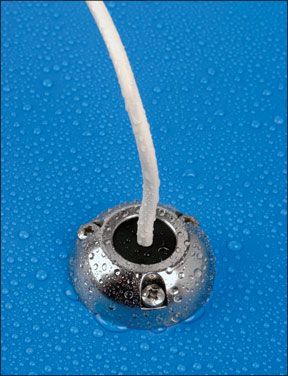While the wireless trend has eliminated some wires, we’re still stuck with plenty of copper poking through our decks. For those of us installing new external Wi-Fi antennas or simply tired of replacing our VHF coaxial every three years because it chafes at the lousy deck fitting that came with the boat, the British hardware manufacturer Scanstrut has introduced a new waterproof deck seal. PS installed a stainless-steel version at the bottom of a test tank filled with water. Nary a drop leaked through.

288
Available in both glass-filled Nylon or 316-grade stainless steel, the Scanstrut deck seal comprises a split-seal rubber gasket, a dome-shaped compression fitting, a threaded base that the compression fitting screws into, and a gasket for the base.
Assembly is dead simple. Drill the hole in the chosen point in your deck (making sure to seal any exposed core) and screw the base and gasket over the hole. Then, pass your antenna wire up through the deck hole and the compression fitting. Slide the rubber seal on beneath the compression fitting, and then bolt the compression fitting to captive nuts in the base. There is no need to remove connectors or end fittings on the wires. Done.
Scanstrut is one of the leading makers of accessories for marine electronics, and it earned top-billing in our last comparison of marine radar mast mounts in 1998. The new range of deck seals have been tested to resist water ingress for up to 30 minutes at one meter of depth. Distributed in the U.S. by Oceanmark, the deck seal is available for hole sizes from 2/3 inches to 1.5 inches. Prices range from $21-$48.




































